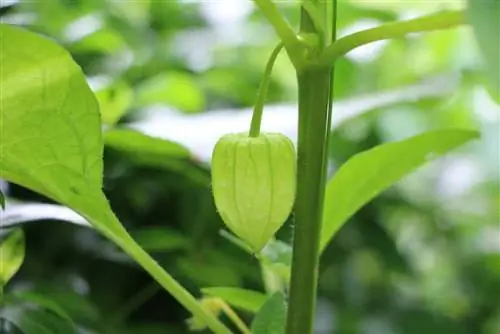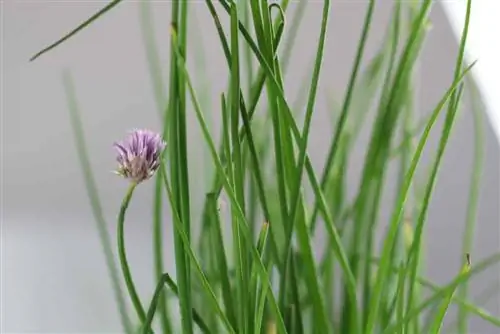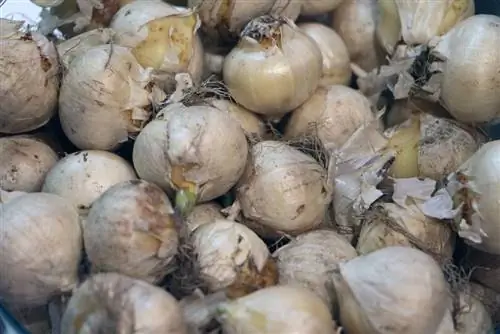- Author admin [email protected].
- Public 2023-12-17 03:39.
- Last modified 2025-06-01 06:48.
Physalis plants come from the Andes and are perennial plants here, but are not frost hardy and are therefore only found as annual plants in temperate climates. With appropriate overwintering, it is also possible to preserve the Physalis in the local areas. Here we reveal how this works and what role the waste plays.
Wintering
If the Physalis plants, also known as Andean berries or Cape gooseberries, are cultivated in pots, overwintering is relatively easy. In principle, it is only necessary to bring the Physalis indoors when the outside temperatures drop below 12-15 °C.
Of course, there is more to successful wintering than putting it in a protected area.
Preparation
So that the Physalis plant can optimally prepare for dormancy during the winter, appropriate measures must be taken in advance. These include:
- Harvesting ripe fruits
- Gradually reduce the amount of watering from September, but never let it dry out
- Stop fertilization completely at the beginning of September
- Blend if necessary
Tip:
Unripe, still green berries can and should be left on the plant. They continue to ripen on the plant. However, if they are harvested unripe, no ripening takes place.
Location
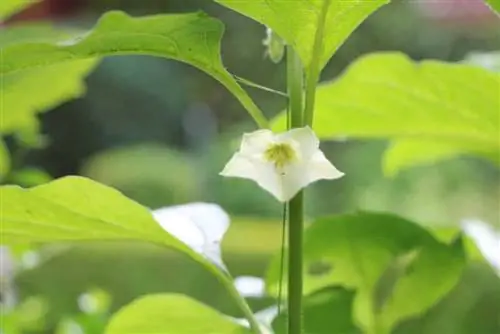
The Physalis plant needs as much light as possible, even in winter quarters, so that no rotting shoots can develop. These occur when the plants are too warm and dark at the same time. The shoots are weak and usually barely leafy. They serve to move towards the light and thus ensure sufficient synthesis performance. If they occur, the plant needs to be placed either brighter or cooler. The decayed shoots can be cut off.
To prevent this from happening in the first place, pay attention to the following points when choosing a winter location:
- Maintain temperatures between 12 and 15 °C
- Physalis plants should be as bright as possible, if necessary use a plant lamp every hour
- Protect plants from drafts
Pouring
Even if the amount of watering should be reduced in September so that the Physalis plants can prepare for winter rest, the substrate and root balls must not dry out. It is therefore important to check the moisture content of the soil regularly. Once the top layer has dried, it can and should be watered.
During the winter, however, it is better to only give small amounts of water at a time and not to water excessively as in the growth phase. Therefore, the condition of the soil should be checked more often to prevent it from drying out. It is also important that no cold water is used to water the Physalis plants. It should also be at room temperature, i.e. no cooler than 12 °C.
Outdoor winter protection
In regions with very mild winters, Physalis plants can remain outdoors if they are adequately protected. However, wintering becomes more difficult. In these cases you need:
- Reduce watering and avoid fertilization from September
- Removal of damaged or dead plant parts
- Harvest the plant and leave no berries on the plant
- Apply mulch, brushwood and/or straw to protect the roots
- Wrap the perennial with garden fleece to protect leaves and shoots from frost
- In dry winters, water on frost-free days
The problem with this type of overwintering is that the plant needs to be protected but at the same time it also needs light and water. Although a cover reduces the risk of frost damage, it also reduces the incidence of light. If you don't want to repeatedly attach protection and remove it on sunny, warm days, it is better to overwinter the Physalis plants indoors.
Blend
Cuttings and overwintering - at first glance, these care measures seem to have nothing in common with each other. In fact, there are mainly two good reasons for pruning Physalis plants before and during winter dormancy:
- The plants are often too large to be easily overwintered indoors without cuttings. Shortening the shoots makes overwintering easier or even possible.
- If the crop is cut, energy is saved. The shoots do not need to be cared for or maintained. The reduced watering and the lack of fertilization therefore do not lead to a restricted supply of the Physalis.
However, it should be mentioned that the Physalis plants do not necessarily have to be trimmed. Another alternative is to let the plants overwinter in a nursery or to place them a little brighter and warmer so that more can be watered and fertilization can begin earlier.
Blending
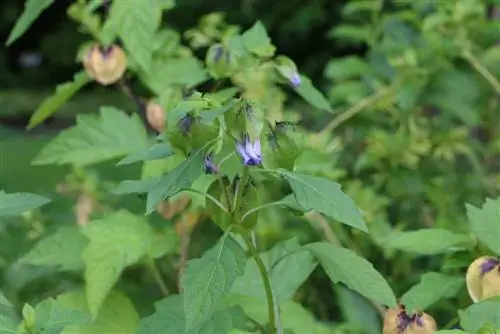
An important care measure for Physalis plants is regular thinning. This only involves removing annoying shoots that cross each other, grow too close together and bear neither flowers nor fruit. In this way, fruit-bearing shoots receive more light and air, reducing the risk of diseases and pest infestations that are difficult to control.
The following points should be noted:
- Use clean cutting tool
- Disinfect scissors or knives before and after use
- Carry out thinning as often as possible and at short intervals so that the measure is gentle on the plant
Cutting can be done all year round and as needed. This also applies to the wintering period.
Hot Gears
As already mentioned, horny shoots form when the Physalis plants are warm but too dark at the same time. The shoots strive for light, but are weakly developed and leafy. If very long and mostly pale-colored shoots fall out, the location or the conditions at the location must be changed. If it is not possible to lower the temperature, the location must be made brighter. Since natural light is not always sufficient in winter, plant lamps can help.
In terms of waste, the horn shoots do not represent an obstacle. They can be easily identified and removed without any problem. It is important that cutting off the light-seeking shoots does not solve the cause of their formation. If they are simply removed, new horny shoots will appear until the care conditions are changed or the plant has exhausted its strength.
Radical waste
If the Physalis plants are too large to overwinter indoors, a more radical cutting is recommended. To do this, the height of the plant is reduced by a third to half. To create a visually beautiful picture, a main shoot can be left a little longer than the surrounding shoots. The measure can be carried out particularly gently from autumn to winter.

